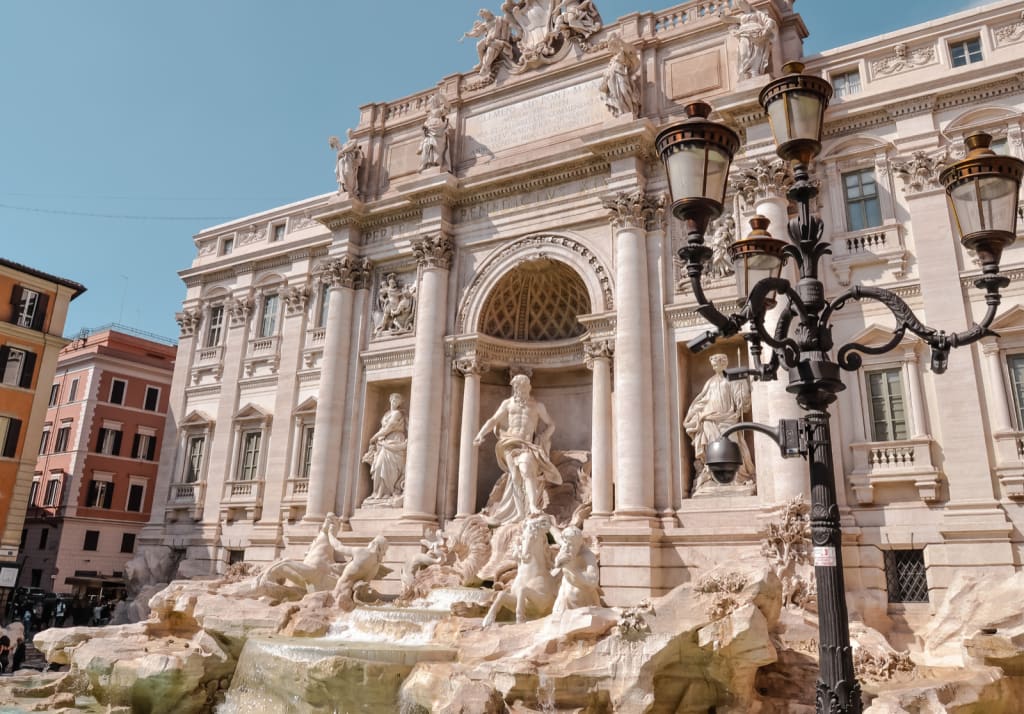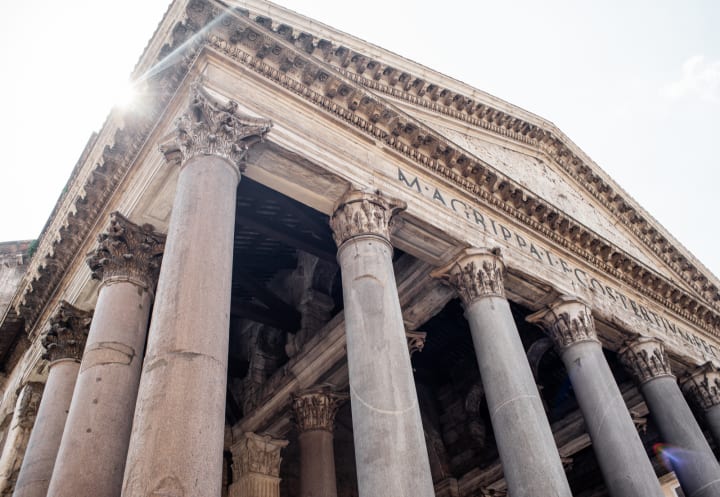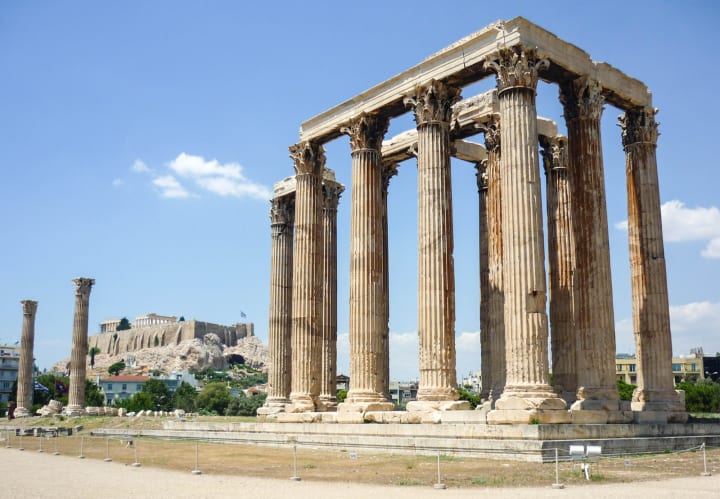
Ancient Rome is renowned for its magnificent architecture, which is an amalgamation of various architectural styles from different cultures. However, the ancient Greeks were the pioneers of architectural ideas that influenced Roman architecture. The Romans borrowed heavily from the Greeks' architectural ideas and transformed them into a unique style that defined the Roman Empire's architecture. In this article, we will delve into the ancient Greek architectural ideas that influenced Roman architecture.
The ancient Greeks' architectural ideas were characterized by their precision, symmetry, and harmony. They believed that architecture was a reflection of their society's values and culture, and it played a significant role in shaping their civilization. The Greeks' architectural ideas were primarily influenced by their religion, social structures, and political ideologies. They built temples, public buildings, and private residences, which were all a reflection of their architectural philosophy.
Use of Columns
One of the significant Greek architectural ideas that influenced Roman architecture was the use of columns. The Greeks used columns as a decorative element in their buildings, and they believed that columns represented strength and stability.
The Greeks used three different types of columns: Doric, Ionic, and Corinthian.
The Doric column was the simplest and was used in buildings that required a sense of strength and stability, such as temples. The Ionic column was more elaborate and was used in buildings that required a sense of elegance, such as public buildings. The Corinthian column was the most ornate and was used in buildings that required a sense of grandeur, such as palaces.

The Tuscan and Doric column
The Romans borrowed the use of columns from the Greeks and transformed them into a unique style that defined Roman architecture.
The Romans developed two new types of columns: the Tuscan and Composite columns.
The Tuscan column was a simplified version of the Doric column and was used in buildings that required a sense of strength and stability, such as military buildings. The Composite column was a combination of the Ionic and Corinthian columns and was used in buildings that required a sense of elegance and grandeur, such as public buildings.

Use of Arches
Another Greek architectural idea that influenced Roman architecture was the use of arches and vaults. The Greeks did not use arches and vaults in their buildings, but the Romans saw the potential of this architectural element and incorporated it into their buildings. The Romans used arches and vaults to create large interior spaces and to support large buildings. They also used the arches and vaults to create intricate designs and decorations.
The use of arches and vaults allowed the Romans to create impressive public buildings, such as the Colosseum and the Pantheon. The Colosseum was a massive amphitheater that could seat up to 50,000 people.
The Colosseum was built with arches and vaults, which allowed the Romans to create large interior spaces without using columns. The Pantheon was a temple dedicated to all the gods and was built with a massive dome that was supported by arches and vaults. The Pantheon was considered one of the most impressive buildings of the Roman Empire and is still standing today.

Inspirations of Architecture
The Greeks also used proportional systems in their architecture, which influenced Roman architecture. The Greeks believed that there was a mathematical relationship between the different elements of a building, and they used proportional systems to achieve balance and harmony. The Greeks used the Golden Ratio, a mathematical ratio that is found in nature, to achieve balance and harmony in their buildings.

The Romans borrowed the proportional systems from the Greeks and transformed them into a unique style that defined Roman architecture.
The Romans used a system called the Roman Orders, which was based on the Greeks' Doric, Ionic, and Corinthian columns.
The Roman Orders were a set of rules that defined the proportions of a building's elements, such as the columns, friezes, and pediments. The Roman Orders were used to achieve balance and harmony in Roman architecture, and they were used in public buildings, such as temples and basilicas.
Architecture Example: The Temple of Mars Ultor

One of the most famous Roman buildings that exemplify the use of Roman Orders is the Temple of Mars Ultor. The Temple of Mars Ultor was built by Emperor Augustus to commemorate his victory over Julius Caesar's assassins. The Temple was built with a series of Corinthian columns that were carefully proportioned to achieve balance and harmony. The Temple of Mars Ultor is an excellent example of how the Romans incorporated the Greek proportional systems into their architecture.
Pediments and Entablatures
The Greeks also used pediments and entablatures in their buildings, which influenced Roman architecture. Pediments and entablatures were decorative elements that were used to enhance the beauty of a building. Pediments were triangular shapes that were placed above the columns of a building, and they were used to create a sense of grandeur and importance. Entablatures were horizontal elements that were placed above the columns and below the pediment, and they were used to create a sense of balance and harmony.
The Romans borrowed pediments and entablatures from the Greeks and transformed them into a unique style that defined Roman architecture. The Romans used pediments and entablatures in their public buildings, such as temples and basilicas. The pediments and entablatures were used to create a sense of grandeur and importance, and they were decorated with intricate designs and sculptures.
Example of Pediments and Entablatures: The Temple of Jupiter Optimus Maximus

One of the most famous Roman buildings that exemplify the use of pediments and entablatures is the Temple of Jupiter Optimus Maximus. The Temple of Jupiter Optimus Maximus was the largest temple in ancient Rome and was dedicated to the god Jupiter. The Temple was built with a series of pediments and entablatures that were decorated with intricate designs and sculptures. The Temple of Jupiter Optimus Maximus is an excellent example of how the Romans incorporated the Greek decorative elements into their architecture.
Conclusion
In conclusion, the ancient Greek architectural ideas influenced Roman architecture in various ways. The Romans borrowed heavily from the Greeks' architectural ideas and transformed them into a unique style that defined the Roman Empire's architecture. The use of columns, arches and vaults, proportional systems, pediments, and entablatures were all architectural elements that were borrowed from the Greeks and transformed by the Romans. The Romans created some of the most impressive public buildings in history, such as the Colosseum and the Pantheon, which exemplify the use of the Greek architectural ideas in Roman architecture. The legacy of the ancient Greeks' architectural ideas can be seen in the magnificent buildings of ancient Rome, which continue to inspire architects and designers to this day.
About the Creator
Gokila
She is an astrophile, introvert,
loves to read books all day long,
addicts in healthy lifestyle
and having curiosity to know about new things.
Life Is As Beautiful As You Make It. Contentment Is The Key To Happiness. Peace Be Upon The Saviour.






Comments
There are no comments for this story
Be the first to respond and start the conversation.